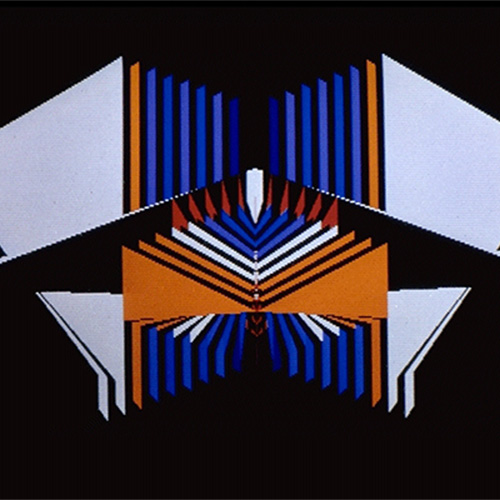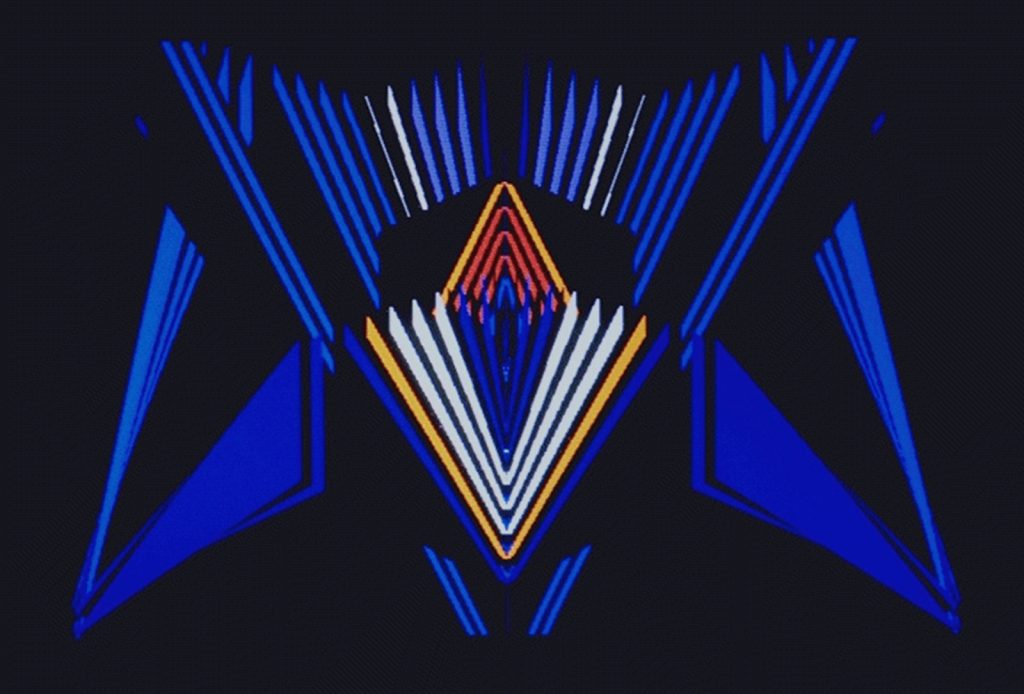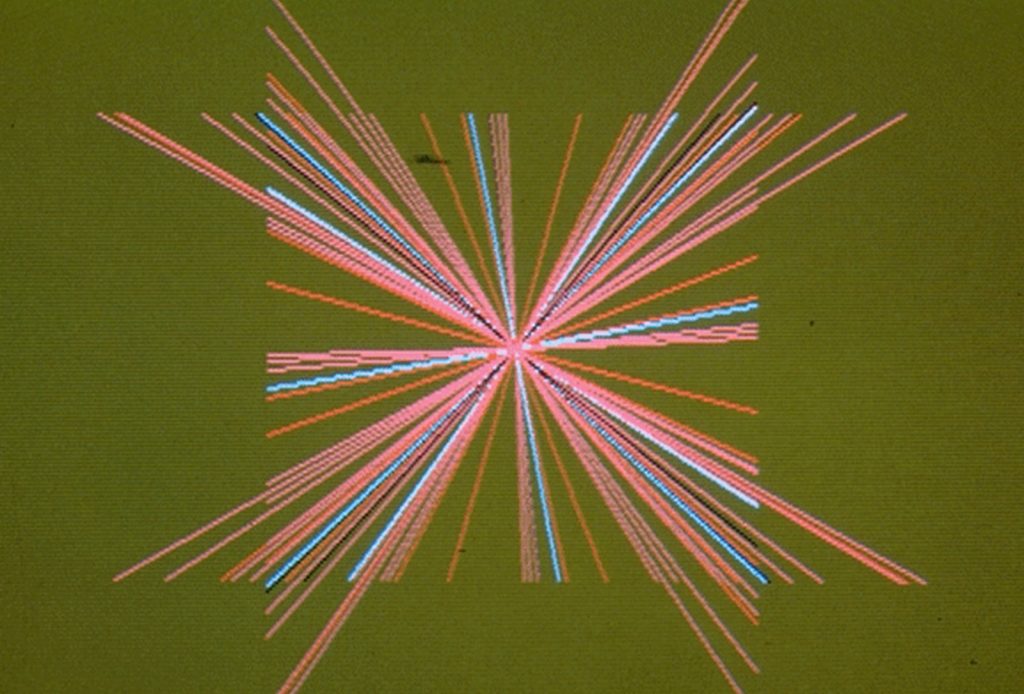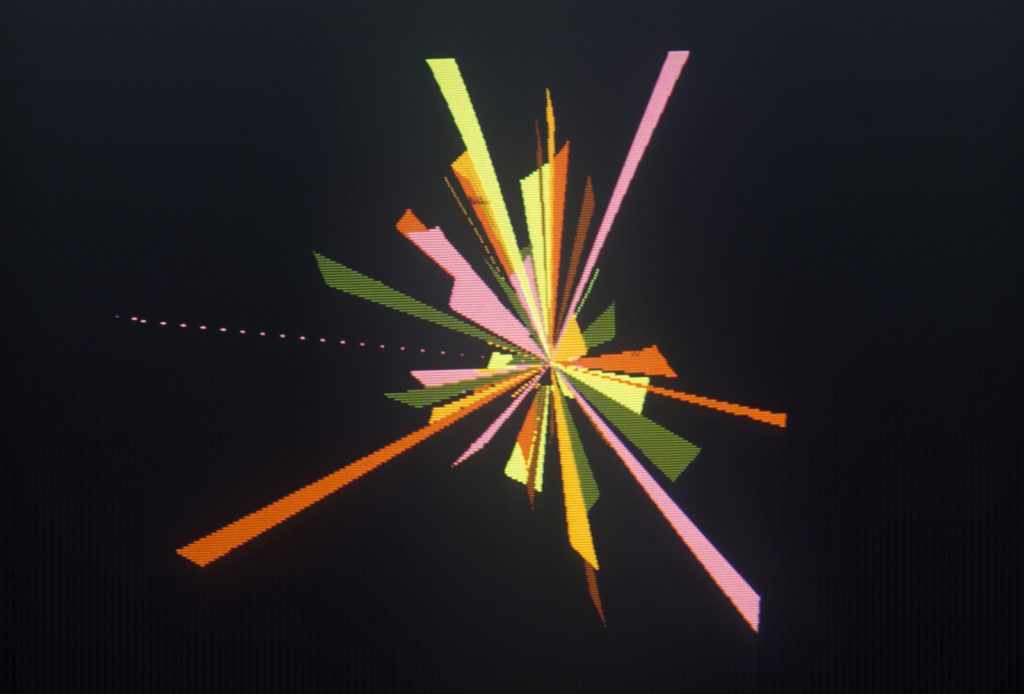















Programs DEC Professional 350 (1982-1984)
Between 1982 and 1984, Herbert W. Franke worked with DEC’s first personal computer, which was marketed as the Professional 350. At that time, the company was mostly known for the VAX, but the company’s entry into the PC market was not successful.
With the interactive program Trapez, the images only emerged when colors and shapes were called up via the keyboard. Continuously operated like a musical instrument, the user could permanently intervene in the program with changing parameters – similar to a VJ today. Franke’s idea was that a visual designer could work together with musicians in a live performance, with the aim of a previously coordinated or spontaneously improvised image and sound concert.






Chip Universe – also designed for interactive control – enabled digital animations whose graphic elements were based on the basic structure of a chip. The world premiere of this image-sound performance took place in 1983 on the occasion of the Sky Art Conference in Munich. The projected dynamic scrolling from the DEC professional 350 was accompanied by improvisations performed by the Swiss musician Bruno Spoerri on a digital wind instrument he developed himself. Lines and triangles were distributed line by line across the screen in the dynamically running program Wald (forest). Here, too, it was possible to change various parameters from the keyboard, for example the proportions, the line height and the colour.




In the digital animation Tropicana (1983/84), the colors ‘blue’ and ‘violet’ predominated and were intended to evoke the impression of an evening tropical garden in the viewer. The leaf-shaped pictorial elements move slowly, as if influenced by a gentle wind. Controlled by a random number generator, new perspectives are constantly emerging, a movement with no beginning or end
All programs were developed with the Basic program adapted for the DEC Professional.
Click here for the other series of home computers:
Programme DOS-Rechner
Serie Phantastische Welten
Programme Zellulare Automaten
